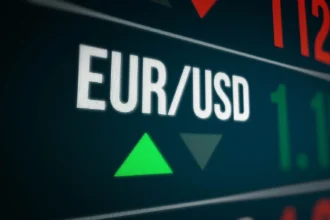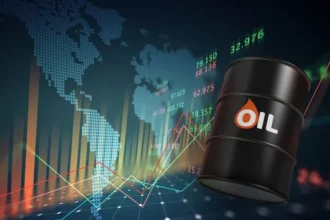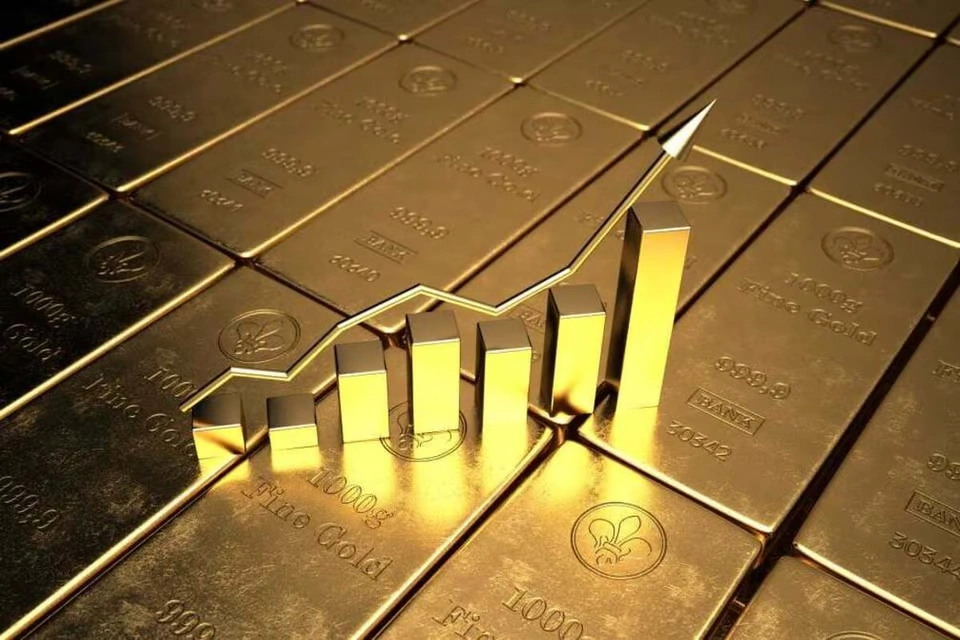Gold Reaches Record Highs Amid Fed’s Rate Cut Signals and Geopolitical Tensions
Gold prices surged to an all-time high on Thursday as the U.S. Federal Reserve hinted at possible interest rate cuts later in 2025. The yellow metal’s rally is further bolstered by ongoing geopolitical instability and economic uncertainties, which have enhanced its appeal as a safe haven asset. Gold’s remarkable performance has also been driven by a weaker U.S. dollar, coupled with the ongoing tariff uncertainties under President Donald Trump’s administration.
This blog post explores how the combination of global tensions, U.S. economic policies, and the Federal Reserve’s outlook have been impacting the price of gold, making it a key investment in today’s volatile market. We will also discuss the broader precious metals market, including silver, platinum, and palladium, and their movements in the wake of these developments.
Gold Hits Record Highs: The Latest Surge
On Thursday, spot gold prices held steady at $3,047.1 per ounce as of 0700 GMT, after hitting a new record of $3,057.21 earlier in the session. U.S. gold futures also gained 0.4%, reaching $3,054.10. This marks the continuation of an impressive rally that has seen gold achieve 16 record highs so far in 2025, with four of those surpassing the $3,000 mark.
Gold’s price surge comes as a result of a variety of economic factors. Market participants are reacting to the U.S. Federal Reserve’s recent decision to keep interest rates unchanged while signaling two quarter-percentage-point rate cuts by the end of 2025. Gold is particularly sensitive to interest rates because it is a non-yielding asset. In a low interest rate environment, investors are more inclined to buy gold as an alternative to assets that offer lower returns, like bonds and savings accounts.
Federal Reserve’s Policy Impact on Gold Prices
The Federal Reserve’s decision to leave its benchmark rate unchanged at 4.25%-4.50% was widely expected by market analysts. However, the Fed also indicated that it expects to cut rates twice by the end of 2025. This dovish stance is likely to continue supporting gold prices, as bullion tends to thrive in periods of lower interest rates. With yields on bonds and other interest-bearing assets expected to remain low, investors are turning to gold as a hedge against inflation and a store of value.
“Non-yielding bullion thrives in a low-interest-rate environment,” said Dick Poon, General Manager at Heraeus Metals Hong Kong Ltd. He further emphasized that ongoing market uncertainty, driven by geopolitical tensions and expectations of future rate cuts, is fueling gold’s rally. The Fed’s cautious approach, amid growing inflationary concerns and global economic risks, provides a conducive backdrop for gold’s continued climb.
Geopolitical Tensions and Economic Uncertainty Driving Gold Demand
Gold has long been viewed as a safe haven during times of geopolitical and economic instability. The ongoing trade war between the U.S. and China, as well as the rising tensions in the Middle East, have heightened gold’s appeal among investors seeking a safe and stable asset. The most recent flare-up of violence in the Middle East, including Israeli airstrikes that killed 37 Palestinians, has further added to the uncertainty surrounding the region.
The Middle East has been a focal point of geopolitical risk for years, with tensions between Israel and Palestine, as well as broader conflicts in the region, posing significant risks to global stability. Gold’s role as a safe haven asset has become even more pronounced as investors seek protection from the risks associated with such volatility.
The trade tensions under President Trump’s administration also contribute to the economic uncertainties driving gold’s price. Trump’s tariffs on imports, particularly from China, have been inflationary and have contributed to slower economic growth in the U.S. Fed Chairman Jerome Powell acknowledged that these tariffs have tilted the U.S. economy toward slower growth and higher inflation. As a result, investors are increasingly turning to gold to protect their wealth from these unpredictable forces.
Gold’s Inflation Hedge Appeal
In addition to geopolitical tensions, inflation concerns continue to drive demand for gold. Inflationary pressures, exacerbated by tariffs and supply chain disruptions, have led investors to seek gold as an effective hedge against rising prices. The Federal Reserve’s cautious stance on interest rates amid inflationary fears only enhances gold’s appeal.
“Gold’s appeal as a safe haven and inflation hedge has further strengthened in light of those geopolitical concerns and tariff uncertainty,” said Christopher Wong, an OCBC forex strategist. With inflation fears mounting, gold remains one of the best options for those looking to preserve wealth in an environment where inflation is rising, and traditional investments may not keep pace.
Will Gold Continue to Rise?
As of now, gold’s rally shows no signs of slowing down, but experts caution that a correction could be on the horizon. Nicholas Frappell, Global Head of Institutional Markets at ABC Refinery, mentioned that while the first quarter of 2025 has been a strong period for gold, it is possible that a short-term correction could occur. However, he also pointed out that any corrections to gold’s price have been relatively short-lived, with the metal quickly rebounding.
Frappell noted that the $3,090-$3,100 range might face some resistance, but overall, the outlook for gold remains constructive, especially given the ongoing macroeconomic uncertainties. As long as the Fed maintains its dovish stance and geopolitical risks persist, gold is likely to continue benefiting from its status as a safe-haven asset.
The Broader Precious Metals Market
While gold is stealing the spotlight, other precious metals are also seeing notable movements due to the same economic factors. Silver, platinum, and palladium are all influenced by similar dynamics, with each metal experiencing its own unique challenges and opportunities.
- Silver: Spot silver prices held steady at $33.8 an ounce, remaining relatively flat as the precious metal tracks gold’s movements. Silver tends to follow gold’s lead, benefiting from the same inflation and safe-haven demand factors. However, silver’s industrial use also makes it more sensitive to economic growth forecasts, which could limit its upside potential compared to gold.
- Platinum: Platinum prices fell by 0.3% to $989.85 per ounce. Platinum has been impacted by slower demand in the automotive industry, as the metal is widely used in catalytic converters. Despite this, platinum remains attractive to investors as a long-term store of value, especially as it remains priced significantly lower than gold, making it an appealing alternative.
- Palladium: Palladium, another critical metal used in automotive catalytic converters, saw a 1% drop to $949.50. Palladium’s price has been under pressure due to reduced demand from the automotive sector and concerns about the global slowdown in manufacturing. However, its long-term prospects remain tied to the ongoing transition toward electric vehicles, which could eventually reduce the demand for palladium.
Gold’s Outlook in 2025
The outlook for gold in 2025 remains positive, with factors such as geopolitical tensions, inflationary pressures, and the Fed’s dovish stance supporting its price. As gold continues to benefit from the demand for safe-haven assets and inflation hedges, its performance may further strengthen if economic and geopolitical risks persist.
However, investors should also be prepared for potential volatility. While gold has shown resilience in recent months, the market is not immune to corrections, and short-term fluctuations are inevitable. That being said, gold’s role as a store of value and hedge against uncertainty makes it a key investment for those looking to preserve wealth in an increasingly unpredictable world.
Conclusion
Gold’s record-breaking surge is a direct response to a combination of economic and geopolitical factors that are reshaping the global investment landscape. As the U.S. Federal Reserve signals interest rate cuts and geopolitical tensions escalate, gold’s appeal as a safe haven asset continues to grow. With the potential for further uncertainty, gold is likely to remain a key player in investment portfolios for those seeking stability and protection from economic volatility. Whether as a hedge against inflation or as a safe haven during times of geopolitical turmoil, gold’s performance in 2025 offers promising opportunities for investors navigating an uncertain global economy.
Disclaimer: This article is for informational purposes only and does not constitute financial advice. Always conduct your own research before investing in Gold Market.



